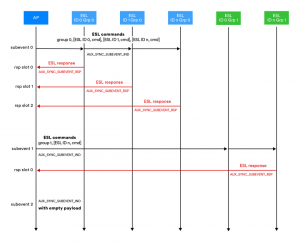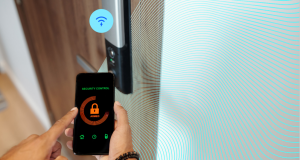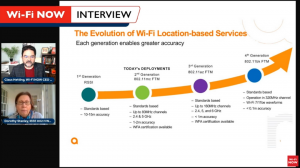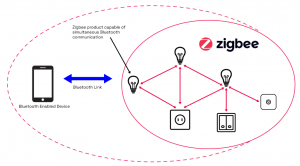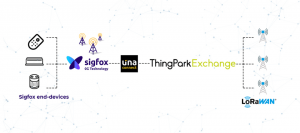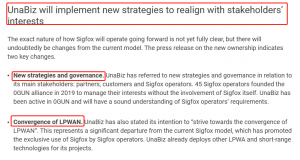Since the IoT market has been hot, software and hardware vendors from all walks of life have started to pour in, and after the fragmented nature of the market has been clarified, products and solutions that are vertical to application scenarios have become mainstream. And, in order to make the products/solutions to meet the needs of customers at the same time, the relevant manufacturers can gain control and more revenue, self-research technology has become a major trend, especially non-cellular communication technology, once in the market there are a hundred of the flourishing situation.
In terms of small wireless communication, there are Bluetooth, Wi-Fi, Zigbee, Z-Wave, Thread and other technologies; in terms of low-power wide area network (LPWAN), there are also Sigfox, LoRa, ZETA, WIoTa, Turmass and other quite distinctive technologies.
Next, this paper briefly summarizes the development status of some of the above technologies, and analyzes each technology in three aspects: application innovation, market planning, and industry chain changes to discuss the current situation and future trends of the IoT communication market.
Small wireless communication: Scene expansion, technology interconnection
Today, each small wireless communication technology is still iterating, and the changes in the function, performance and adaptation scenarios of each technology actually have some revelation on the market direction. At present, there is a phenomenon of To C technology To B in the scene exploration, and in the technology linkage, in addition to Matter protocol landing, cross-technology interconnection also has other progress.
Bluetooth
· Bluetooth 5.4 Released - Increase Electronic Price Label Application
According to Bluetooth Core Specification Version 5.4, ESL (Electronic Price Label) uses a device addressing scheme (binary) consisting of an 8-digit ESL ID and a 7-digit group ID. And ESL ID is unique among different groups. Therefore, the ESL device network can contain up to 128 groups, each containing up to 255 unique ESL devices that are members of that group. In simple terms, in an electronic price tag application, if a Bluetooth 5.4 network is used, there may be a total of 32,640 ESL devices in a network, each tag can be controlled from a single access point.
Wi-Fi
· Scene expansion to smart door locks, etc.
In addition to wearables and smart speakers, smart home products such as doorbells, thermostats, alarm clocks, coffee makers and light bulbs are now connected to Wi-Fi networks. In addition, smart locks are also expected to access Wi-Fi networks for more services. Wi-Fi 6 is reducing its power consumption while increasing data throughput by improving network efficiency and increasing bandwidth.
· Wi-Fi positioning is powering up
With Wi-Fi location accuracy now reaching 1-2m and third and fourth generation standards being developed based on Wi-Fi location services, new LBS technologies will enable dramatic improvements in accuracy to serve a wide range of consumers, industries, enterprises, etc. Dorothy Stanley, standards architect at Aruba Networks and chair of the IEEE 802.11 Working Group, said the new and improved LBS technologies will enable Wi-Fi location to move to within 0.1m. New and improved LBS technologies will enable Wi-Fi positioning to within 0.1m, said Dorothy Stanley, standards architect at Aruba Networks and chair of the IEEE 802.11 Working Group.
Zigbee
· Release of Zigbee Direct, integrated Bluetooth direct connection to cell phones
For consumers, Zigbee Direct provides a new mode of interaction through Bluetooth integration, allowing Bluetooth devices to access devices in the Zigbee network without the use of a cloud or hub. In this scenario, the network in Zigbee can connect directly to the phone via Bluetooth technology, allowing the phone to control the devices in the Zigbee network.
· Release of Zigbee PRO 2023 enhances device security
Zigbee PRO 2023 extends its security architecture to standardize hub-centric operation by "working with all hubs", a feature that improves hub-centric resilient networks by helping devices identify the most appropriate parent node to securely join and rejoin the network. In addition, the addition of support for European (800 Mhz) and North American (900 MHZ) sub-gigahertz frequencies provides higher signal strength and range to support more use cases.
Through the above information, it is not difficult to draw two conclusions, the first is that the direction of communication technology iteration is gradually changing from performance improvement to meet the needs of application scenarios and provide new products for industry chain partners; the second is that in addition to the Matter protocol in the interconnection "barriers", the technologies are also in the two-way interconnection and interoperability.
Of course, small wireless communication as a local area network is only a part of IoT communication, and I believe that the continuing hot LPWAN technology, also attracts much attention.
LPWAN
· Industry chain operation upgrade, vast overseas market space
From the early years when the technology first emerged for application and popularity, to today's pursuit of application innovation to take more markets, the direction of technology iteration is undergoing an amazing transformation. It is understood that in addition to small wireless communication technology, a lot has happened in the LPWAN market in recent years.
LoRa
· Semtech acquires Sierra Wireless
Semtech, the creator of LoRa technology, will integrate LoRa wireless modulation technology into Sierra Wireless' cellular modules with the acquisition of Sierra Wireless, a company that focuses on cellular communication modules, and by combining the two companies' products, customers will be able to access an IoT cloud platform that will handle multiple tasks including device management customers will be able to access an IoT cloud platform that will handle multiple tasks including device management, network management and security.
· 6 million gateways, 300 million end nodes
It is worth mentioning that LoRa is developing in different directions at home and abroad based on different specifications in each country, with China moving toward "regional networking" and foreign countries continuing to build large WANs. It is understood that the foreign Helium platform (Helium) provides great support for LoRa gateway coverage based on the digital asset reward and consumption mechanism. Its operators in North America include Actility, Senet, X-TELIA, etc.
Sigfox
· Multi-Technology Convergence and Synergy
Since Singaporean IoT company UnaBiz acquired Sigfox last year, the former has adapted the latter's operations, especially in terms of technology convergence, and Sigfox is now converging other LPWA technologies and small wireless communication technologies for its services. Recently, UnaBiz has facilitated the synergy of Sigfox and LoRa.
· Business Model Shift
UnaBiz re-established Sigfox's business strategy and its business model. In the past, Sigfox's strategy of deciding to develop a global capability to meet various needs and becoming an operator itself chilled many companies in the industry chain due to its strict control over the technology ecosystem, requiring partners based on the Sigfox network to share a significant amount of service revenues, etc. And today, instead of focusing only on network operations, UnaBiz is focusing more on key industries to provide services, adjusting the operational strategy for key stakeholders (partners, customers and Sigfox operators) and significantly reducing Sigfox's losses by 2/3 by the end of 2022 compared to the end of 2021.
ZETA
· Open ecology, industry chain synergy development
Unlike LoRa, where 95% of the chips are produced by Semtech itself, ZETA's chip and module industry has more participants, including STMicroelectronics (ST), Silicon Labs, and Socionext abroad, and domestic semiconductor manufacturers such as Quanxin Micro, Huapu Micro, and Zhipu Micro. In addition, ZETA cooperates with socionext, Huapu Micro, Zhipu Micro, DaYu Semiconductor and other manufacturers of chips, not limited to the application of ZETA modules, can license IP to various application manufacturers in the industry, forming a more open underlying ecology.
· Development of ZETA PaaS platform
Through ZETA PaaS platform, developers can create solutions for more scenarios; technology providers can cooperate with IoT PaaS to reach a wider range of customers; manufacturers can connect to the market more quickly and reduce the total cost. In addition, through the PaaS platform, each ZETA device can break through the category and scenario restrictions to connect with each other, so as to explore more data application value.
Through the development of LPWAN technology, especially the bankruptcy and "resurrection" of Sigfox, it can be seen that, in order to get more connections, IoT communication technology needs industry chain partners to develop collaboratively and improve stakeholder participation and revenue. At the same time, we can also see that other technologies such as LoRa and ZETA are also actively developing the ecology.
To sum up, compared to the previous years when communication technologies were born and each technology holder was working separately, a major trend in recent years is towards convergence, including the complementarity of small wireless communication technologies in terms of functionality and performance, and LPWAN technologies in terms of applicability.
On the other hand, elements such as data throughput and latency, which were once the focus of technology iteration, have now become basic requirements, and the focus of technology iteration is now more on scenario expansion and services. The change in the direction of iteration actually means that the number of participants in the industry is increasing and the ecology is improving. As the foundation of IoT connection, communication technology will not stop at "cliché" connection in the future, but will have more new ideas.
Post time: Apr-27-2023
